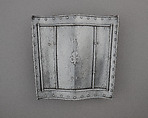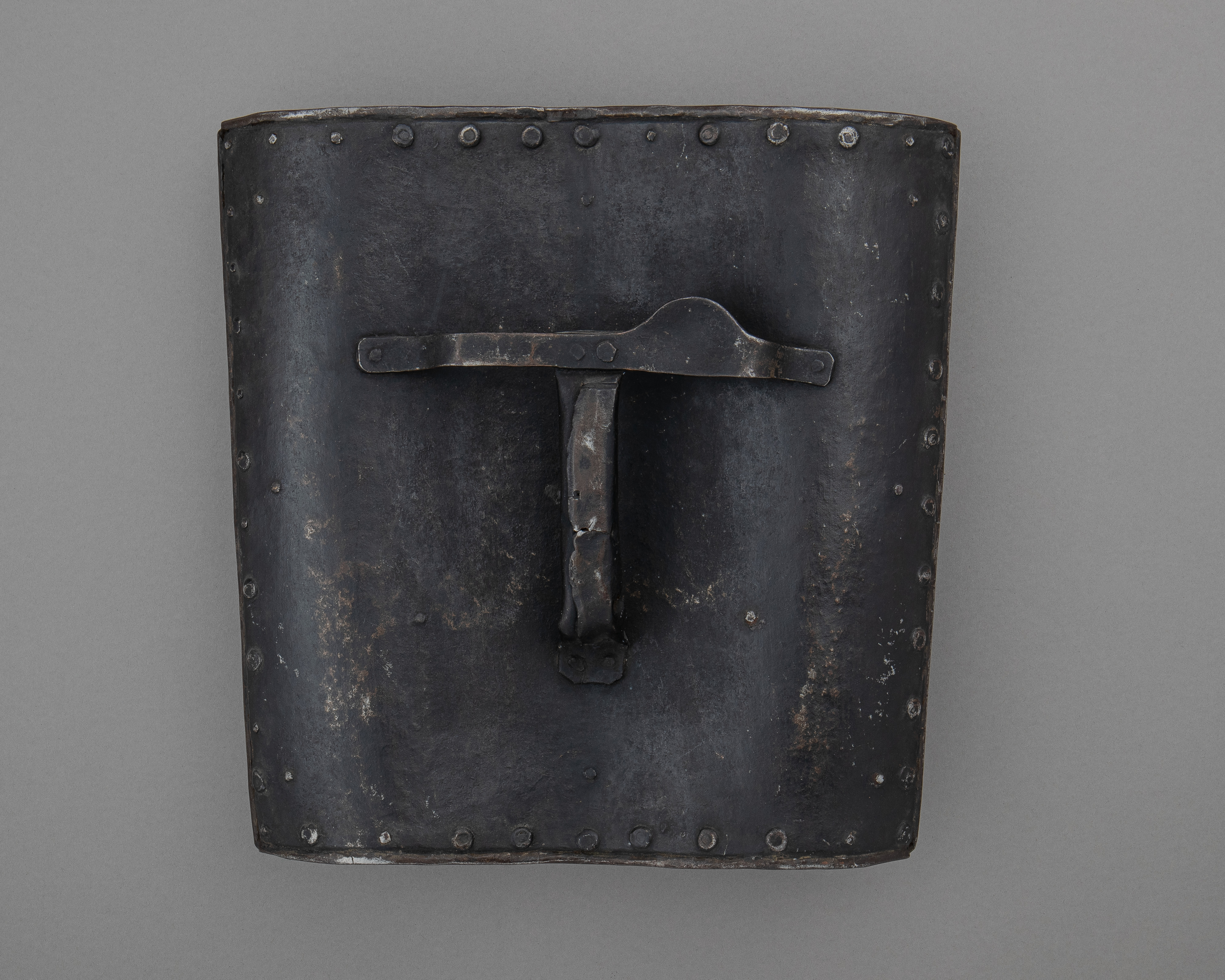Fist Shield
Not on view
The shield is trapezoidal in outline and longitudinally convex in its median section, with the side edges slightly bent forward. It is reinforced around its edges with hammered turns and the semiglobular heads of the rivets, which once held the lining. A framework of six steel rods is riveted to the surface to stop and entrap an opponent's blade. The hook in the center could also serve this function, but its main purpose was for carrying the shield attached to a waist belt, with its grip on the outside ready to be grasped. The grip is secured by steel straps bridging the hollow of the median ridge.
Since the thirteenth century, small round bucklers faced with steel had been used in sword fencing; when not in use they were usually hung from the belt or over the sword hilt. The quadrangular shield with a hollow mid-ridge is of eastern European origin, and appeared in the fourteenth century as the Lithuanian targe; originally these targes were of wood covered with leather to prevent splitting. In the sixteenth century, formal fencing was practiced with rapier and parrying dagger, though conservative fencers retained round or square bucklers, enhanced with cunning devices such as the catch hook. Both techniques are illustrated in the woodcuts of the treatise Opera nova, 1536, by the Bolognese fencing master Achille Marozzo.
Due to rights restrictions, this image cannot be enlarged, viewed at full screen, or downloaded.
This artwork is meant to be viewed from right to left. Scroll left to view more.




